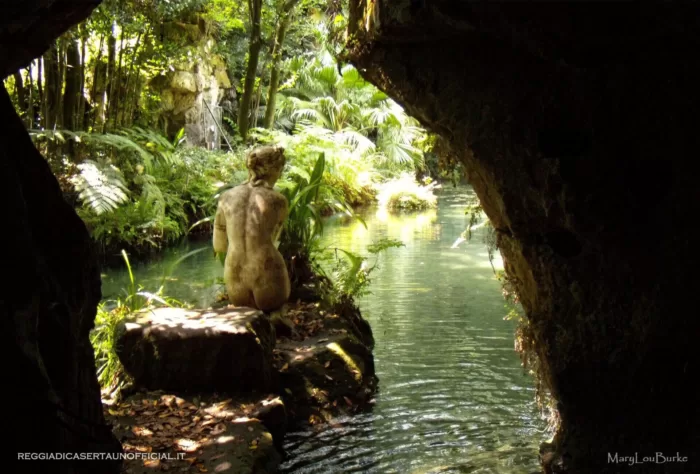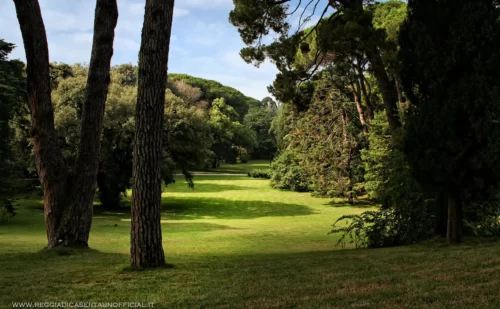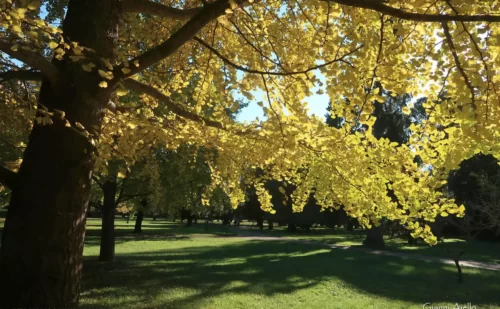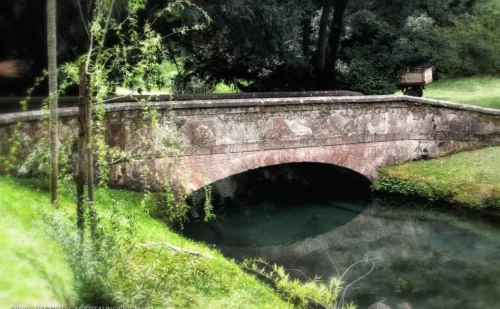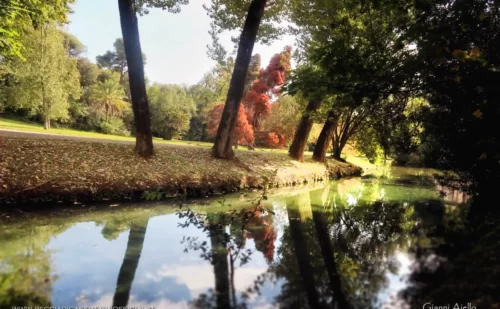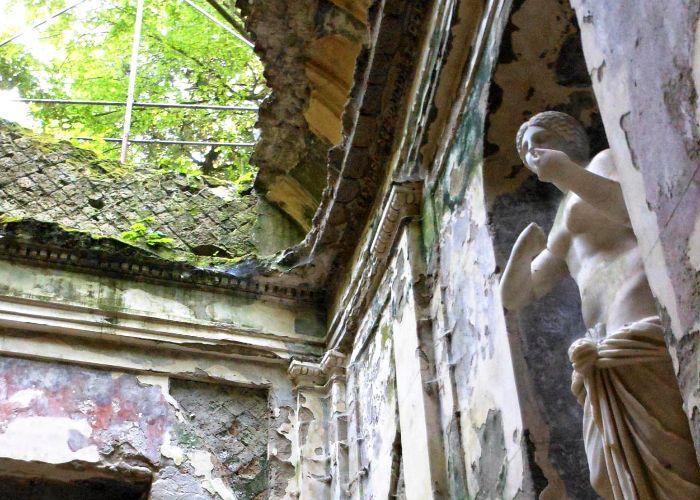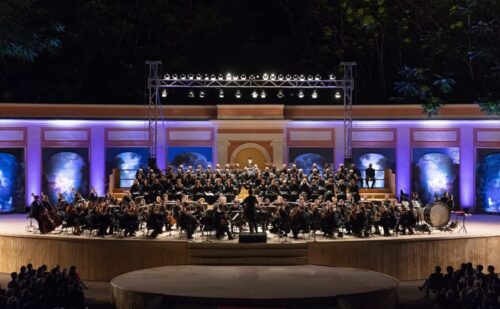The English Garden of the Royal Palace of Caserta
The beautiful English Garden, full of rare plants and Masonic rituals
History of the English Garden
To the right side of the fountain of Diana and Actaeon with the upper waterfall is the English Garden. Created at the request of Queen Maria Carolina of Austria, wife of King Ferdinand IV. The English Garden was created by Carlo Vanvitelli and the English gardener John Andrew Graefer. In the intentions of Queen Maria Carolina, who invested her personal fortune to create it, the garden of Caserta had not only to hold its own, but to obscure the Petit Trianon of Versailles, the latter commissioned by her sister Marie Antoinette Queen of France .
The English Garden, the first example of an informal Italian garden, occupies an area of 24 hectares. Construction work began in 1785 and was completed very quickly. The water that feeds this garden comes from the Carolino Aqueduct.
Almost everything was built by man, hills, meadows, ponds and canals, etc., and the plants were imported from all over the world. Following the fashion that was spreading throughout Europe from England, numerous Follies were built useful for the stops and free time of royalty, but orange groves and greenhouses were also created for the cultivation and study of plants.
During the 19th century, under the guidance of the botanists Gussone and Terracciano, the garden was called the Royal Botanical Garden of Caserta. Here, in fact, exceptional specimens of Cinnamomum camphora, Taxus baccata, Cedrus libani are visible and what is handed down was the first camellia plant to arrive in Europe from Japan.
The masonic rituals in the English Garden
What may appear like a decorative element, often in reality it was part of Masonic initiation rituals.
Maria Carolina, an adept of Neapolitan Freemasonry, wanted to hide in the garden a sort of initiatory itinerary which, through a series of stages marked by fabriques with a clear symbolic value – such as the pyramid, the neo-Gothic burial ground and the tholos temple that stands out in the center of the labyrinth – ended, as in a sort of lustral catharsis, in the enchanted space of the lake dedicated to Venus. In the most secluded place of the garden, on the remains of a tuff quarry and on the edge of a small pond, the Vanvitelli gives life to a highly suggestive environment where the rocks, made up of large tuffaceous boulders, the copious vegetation and the statue of Venus form a spectacular ensemble that echoes the magical atmosphere of the Sibilla Cumana cave. In the background Vanvitelli places the Roman cryptoporticus in ruins with statues and archaeological pieces taken directly from the excavations of Herculaneum and Pompeii, where vegetation and architecture blend in a fantastic and symbolic setting that still evokes the myth of the Sibyl and refers to a mythical Age of the Gold. Still inspired by mythical ages is the small temple built on the island surrounded by the waters of Swan Lake. The small temple, characterized by the thatched roof of the cell, surmounted by an elliptical dome, refers to the Vitruvian theory of the derivation of the classical orders from nature from which the complex symbolism of Gothic architecture descended.
The lakes and the temples
In the grove called “Labyrinth”, made by Carlo Vanvitelli, there is a lily pond that expands to contain two islands, rich in vegetation, romantic representation of the nineteenth-century taste: the largest one has a small temple in ruins, with columns of granite and dolomite, taken from the ruins of Pompeii; the smallest one has a sort of pavilion used for keeping of ducks, swans and other water birds that live in the lake.
THE CRYPTOPORTICUS
A place full of romantic charm, the Cryptoporticus is a false Roman ruin, built shortly after the discovery of Pompeii. It was purposely built as a ruin, to give to the guests of the Court the feeling of walking into the Roman town recently discovered and being excavated. To make guests feel “like Indiana Jones” we would say today.
The structure is a circular nymphaeum made of tufa, in which there are niches decorated with stucco Roman opus reticulatum, containing eleven statues, some of whom came from Pompeii, others from the Farnese collection, others already presents in place before 1792, the floor intentionally disjointed, is made of coloured marble tile. The vault was discovered in two points, while the fake wall has cracks and breakage. From the roots of a large yew grove, planted by Graefer, gushing water that feeds a beautiful lake, the Bath of Venus, where the goddess is portrayed as if it emerged from the waves, a statue in the “old”, sculpted by Tommaso Solari in 1762, it was placed on one of the rocks that divide the waters in a thousand streams. In this area the vegetation is rich in ferns.
Relive the amazement of the first discoverers of the ruins of Pompeii and Herculaneum, when, descending from a hole in the ceiling, they discovered a place full of art treasures.
The bath of Venus
One of the most captivating corners of the English Garden is undoubtedly the Bath of Venus, so called for the presence of a statue in Carrara marble,made by Tommaso Solari, depicting the goddess in the act of leaving the water of a small lake , surrounded by a forest of laurels, oaks and monumental specimens of Taxus Baccata.In the recesses of the lake made of precipices and nymphs inspired by the cavern of the Cumaean Sibyl described in the Aeneid, the sunlight penetrates through the foliage of trees, while you can hear the gurgling of the waterfall flowing from the bottom of the great yew located at the center of the hemicycle.
The English Mansion
Not far from the old greenhouses, there is the English Mansion, built between 1790 and 1794 as home for the gardener John Andrew Graefer. It is a building with two floors, each one with twelve rooms, with the outside façade decorated with arches and doric pillars. The structure also provided a place for the storage of seeds and tools. Graefer continuously done excursions to Campania, Capri, Salento coast and the Sicilian city of Palermo to stock up on plants and, through contacts with the English botanists, was able to obtain many specimens and seeds from Australia, China and Japan, from which created hybrids and numerous rarities in the garden, that were not planted but kept in the greenhouses near the mansion.Near the greenhouses there is the Aquarium, a large circular tank designed to contain an aquatic plant. Nearby, there were also the School of Botany.
The Aperia (Bee House)
In the northern part of the garden there is one of its most spectacular structures, born from the adaptation of the large tank of an out of use cistern, built by Luigi Vanvitelli several years before Graefer’s arrival. The reservoir, supported by very solid pylons, was located on the top of a wooded hill and was to be used in the event of a breakdown in the Caroline aqueduct; it was never used, and in French times it became a breeding place for bees for the production of honey (hence the name “Aperia”).
In 1826, during the reign of Francesco II, it was used “for Flora’s use”, that is to say as a greenhouse, for the cultivation of arboreal plants. Therefore, the statue of Flora or Ceres was placed there, a work created by Tommaso Solari in 1761 and for which the artist was paid by Luigi Vanvitelli. In this part the garden is a parterre with flowers. In the past it was divided into five large plots of land, called Scolle, for the cultivation of small and large trees.
External Link
